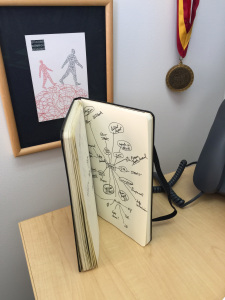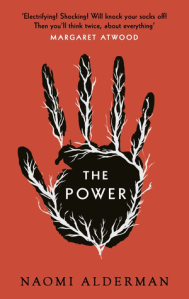Decades ago, while on the faculty of the Annenberg School for Communication at USC, the late Professor Richard Byrne convinced me to use a journal. In have never regretted that decision. It is an easy and powerful tool for managing information.
When I met Richard, he was the Associate Dean, who helped found the Annenberg School of Communication with his friend and colleague Frederick Williams, and later served as an Acting Dean. When he was not teaching, or directing the School, Richard taught time management and information management to executives through a firm he created, called Springboard! In university, Richard studied drama, and he used his skill set from acting in his teaching, and to present captivating keynote speeches for executives around the world. He was intense and engaging. He led an incredibly full life until he died from the complications of skin cancer at a young age, 53.
Richard did talks occasionally for students around various time management issues. I was sitting in on one of his tutorials when I learned his simple lessons on keeping a journal, which have stuck with me for decades. So easy.
First, get a journal you that is the size that is best for you to carry with you as often as possible. I like a small 5″ by 8 1/4″ Moleskin® journal. I always prefer plain, blank paper, but lined or graphic blank pages are fine, whatever you prefer. But use high quality paper so that you can write with different pens or markers without the ink bleeding through the pages.
Of course, it can have any color binding. I prefer black, but changing colors is helpful in keeping the journals identifiable. You’ll want to keep past journals accessible, so anything you can do to keep them in sequence is helpful, such as shifting colors. [Needless to say, you should have a pen or quality writing tools that you like. I always use a fountain pen with a medium nib.] 
You must wonder why you would want anything on paper. Is it not easier to do this on your computer or smart phone? I’ve tried to find digital media to substitute for my paper journal, but have never been satisfied that they are as flexible and user friendly. Just as the book remains difficult to beat electronically, I find the paper journal more creative, flexible, and private.
Secondly, start keeping notes immediately and start at the very first page of your journal. Date your entries, and take notes on anything. If you are listening to a lecture, keep the lecture notes in the journal. If you come up with an idea, sketch it in your journal. If you have thoughts on anything, reactions to a movie or play, an article, an observation, put it in the journal, dated, and in chronological sequence.
Chronological notes are key to being findable. Any other organization gets overtaken quickly with new topics or ideas that don’t fit a predetermined system, and you’ll find it very easy to quickly find the notes you are looking for if they are in a chronological order. No matter what the topic, enter everything chronologically, starting from the front and moving through, and you will be able to find everything by thumbing through the pages. Instead of having notes scattered everywhere, important as well as unimportant things are centralized in the journal. In fact, you don’t know what will be important or unimportant over time, so don’t worry about whether something makes the threshold for being in your journal, just add it. This is particularly critical in getting started. You’ll want to start with something significant, but it is more important to simply start.
There is an exception. I normally leave the first two pages of my journals for references, such as phone numbers, my address, or anything I don’t want to memorize that I often need. So your journal becomes an aide memoire in more ways that one.
Third, be as comprehensive as possible. For every meeting, phone call or conversation, take notes in your journal. Any thoughts that you believe to be worth taking notes on, or any information you want to remember, enter in your journal. That means you should carry it with you as often as possible. You want it to be a habit – both having and using the journal.
Fourth, I find it helpful to use a variety of note taking methods. I enjoy mind mapping, and I use mind maps often such as for taking notes on a lecture, or sketching notes for something I plan to write. But I don’t use only one form. I sometimes do simple lists, write out text, draw images or create typologies. By varying the form of your notes, they become easier to find, and the exercise avoids becoming too mechanical.
So get your first journal, starting filling the pages, and see for yourself how valuable it can be.
Share this:





